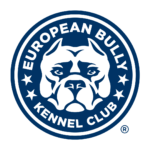ORIGIN: Great Britain.
BRIEF HISTORICAL SUMMARY: It was a certain James Hinks who first standardised the breed type in the 1850s, selecting the egg-shaped head. The breed was first shown in its present form at Birmingham in 1862. The Bull Terrier Club was formed in 1887. The truly interesting thing about the breed is that the standard says quite deliberately, “There are neither weight nor height limits, but there should be the impression of maximum substance for size of dog consistent with quality and sex. Dog should at all times be balanced.”
A smaller example of the Bull Terrier has been known since the early 19th century but fell out of favour prior to the First World War and was removed from the Kennel Club Breed Register in 1918. In 1938, a revival was spearheaded by Colonel Richard Glyn and a group of fellow enthusiasts who formed the Miniature Bull Terrier Club. The standard is the same as that of the Bull Terrier with the exception of a height limit.
GENERAL APPEARANCE: Strongly built, muscular, well balanced and active with a keen, determined and intelligent expression. A unique feature is a downfaced, egg-shaped head. Irrespective of size dogs should look masculine and bitches feminine.
BEHAVIOUR/TEMPERAMENT: Courageous, full of spirit, with a fun loving attitude. Of even temperament and amenable to discipline. Although obstinate is particularly good with people.
HEAD: Long, strong and deep right to end of muzzle, but not coarse. Viewed from front egg–shaped and completely filled, its surface free from hollows or indentations. Profile curves gently downwards from top of skull to tip of nose.
CRANIAL REGION:
Skull: Top of skull almost flat from ear to ear.
FACIAL REGION:
Nose: Should be black. Bent downwards at tip. Nostrils well developed.
Lips: Clean and tight.
Jaws/Teeth: Under-jaw deep and strong. Teeth sound, clean, strong, of good size, regular with a perfect, regular and complete scissor bite, i. e. upper teeth closely overlapping lower teeth and set square to the jaws.
Eyes: Appearing narrow and triangular, obliquely placed, black or as dark brown as possible so as to appear almost black and with a piercing glint. Distance from tip of nose to eyes perceptibly greater than that from eyes to top of skull. Blue or partly blue undesirable.
Ears: Small, thin and placed close together. Dog should be able to hold them stiffly erect, when they point straight upwards.
NECK: Very muscular, long, arched, tapering from shoulders to head and free from loose skin
BODY: Well rounded with marked spring of rib and great depth from withers to brisket, so that latter nearer ground than belly.
Back: Short, strong, with backline behind withers level, arching or roaching slightly over loins.
Loin: Broad, well muscled.
Chest: Broad when viewed from front.
Underline and belly: From brisket to belly forms a graceful upward curve.
TAIL: Short, set on low and carried horizontally. Thick at root, it tapers to a fine point.
LIMBS
FOREQUARTERS:
General appearance: Dog should stand solidly upon legs and they should be perfectly parallel. In mature dogs length of forelegs should be approximately equal to depth of chest.
Shoulder: Strong and muscular without loading. Shoulder blades wide, flat and held closely to chest wall and have a very pronounced backward slope of front edge from bottom to top, forming almost a right angle with upper arm.
Elbow: Held straight and strong.
Forearm: Forelegs have strongest type of round, quality bone.
Metacarpus (Pastern): Upright.
Forefeet: Round and compact with well arched toes.
HINDQUARTERS:
General appearance: Hind legs parallel when viewed from behind.
Thigh: Muscular.
Stifle (Knee): Joint well bent.
Lower thigh: Well developed.
Hock joint: Well angulated.
Metatarsus (Rear pastern): Bone to foot short and strong.
Hind feet: Round and compact with well arched toes.
GAIT / MOVEMENT: When moving appears well knit, smoothly covering ground with free, easy strides and with a typical jaunty air. When trotting, movement parallel, front and back, only converging towards centre line at faster speeds, forelegs reaching out well and hind legs moving smoothly at hip, flexing well at stifle and hock, with great thrust.
SKIN: Fitting dog tightly.
COAT:
Hair: Short, flat, even and harsh to touch with a fine gloss. A soft textured undercoat may be present in winter.
Colour: For White, pure white coat. Skin pigmentation and markings on head not to be penalised. For Coloured, colour predominates; all other things being equal, brindle preferred. Black brindle, red, fawn and tricolour acceptable. Tick markings in white coat undesirable. Blue and liver highly undesirable.
SIZE AND WEIGHT:
There are neither weight nor height limits, but there should be the impression of maximum substance for size of dog consistent with quality and sex.
FAULTS:
Any departure from the foregoing points should be considered a fault and the seriousness with which the fault should be regarded should be in exact proportion to its degree and its effect upon the health and welfare of the dog.
DISQUALIFYING FAULTS
- Aggressive or overly shy dogs.
- Any dog clearly showing physical or behavioural abnormalities shall be disqualified
N.B: Male animals should have two apparently normal testicles fully descended into the scrotum (this expression is obligatory in
